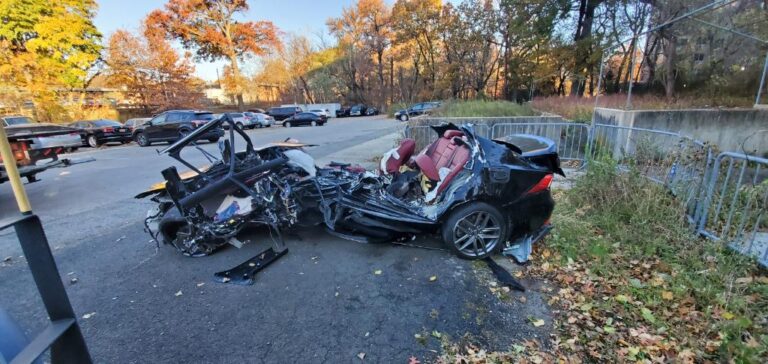The land on which Audrey Trufant Salvant’s home sits in the small Louisiana town of Ironton has become an island in a sea of mud and snake-infested marsh grass. Nearby houses are disconnected from their foundations, a refrigerator is lodged sideways in a tree, and dozens of caskets and tombs from two nearby cemeteries are strewn across lawns for blocks. The entire town is without power and running water.

A month after Hurricane Ida roared ashore with 150-mph (241-kph) winds, communities all along the state’s southeastern coast — Ironton, Grand Isle, Houma, Lafitte and Barataria — are still suffering from the devastating effects of the Category 4 storm.
Many, like Trufant Salvant, are bunking with relatives until they can get back into their homes. Others are staying in hotels or have left the state, she said. Some residents have returned to pick up what few belongings may have survived the flood, but she says they aren’t finding much to salvage — the storm surge generated by Ida rose as high as some homes’ rooftops.

“The day that they allowed folks to come back in here, it was like a funeral,” she said. “Everybody was just heartbroken, because we had seen devastation before … but we had never seen anything like this.”
Churches and charity organizations are working to help, but the destruction is so far-reaching, there don’t seem to be enough donations to go around, said Michael Williamson, head of the United Way of Southeast Louisiana, which covers seven parishes hit by Ida.
The storage room in the United Way’s New Orleans headquarters — typically filled with donated food, water, tarps and cleaning supplies for residents in storm-battered communities — is nearly bare. Donations have been slow to trickle in compared to previous storms, even smaller ones, and there’s not enough to meet the demand, Williamson said.
When it comes to tarps and cleaning supplies — bleach, buckets, mops and rakes — “we can’t get enough of them,” he said.
The United Way is also managing unique cases including that of firefighter Warren Myers, whose 5-year-old special needs daughter, Ameah, requires a specific formula administered through a feeding tube, medicine to control seizures, and diapers, all of which are expensive and have been hard to get since Ida.
Store shelves haven’t been as well stocked, and deliveries haven’t arrived as regularly as usual, said Crystal Hagger, Myers’ fiancée, who helps care for Ameah.

Ameah is unable to stand or walk on her own, so the couple carry her everywhere either in their arms or on their backs with a harness-style carrier.
The family was recently told the United Way found a donor willing to fit Ameah for a pediatric wheelchair.
“Every little act of kindness goes a long way,” Hagger said, her voice choked with emotion. “We are very grateful.”
The need is visually evident everywhere.
In Ironton, Trufant Salvant’s house is one of only about eight in her neighborhood not swamped by Ida’s floodwaters. After Hurricane Katrina hit in 2005, she was able to raise her home, which now sits 12 feet (3.6 meters) off the ground. She spoke to a visitor while sitting on a stool in a small area beneath the house that had been cleared of mud and debris.
Other homes nearby had shifted or moved off their foundations entirely. One house landed in the middle of the street after floodwaters receded.
“This one hit us worse than Katrina,” she said.Williamson says the recovery from Ida will be a long one — yearslong for some. Families that have been able to return are in various stages of cleanup as they wait for insurance adjusters to assess damage and federal assistance funds to come through.

Justin and Lesley Landry of Lafitte are hoping to receive grant funds to elevate their home, which was built about 2 feet (0.61 meters) off the ground in the 1980s and had never flooded until Ida.
The couple got married on Aug. 29, 2020, a year to the day before the storm. Ida’s anniversary gift: nearly 2 feet of water in their house. Waterlines on the outside walls and on the walls of a nearby shed indicate that Ida’s floodwaters rose at one point to about 4 feet (1.2 meters), which is chest-high for Justin. At the height of the storm, the tidal surge was likely even higher than that, he said.
Four days passed before the Landrys could return home to salvage what few belongings were spared in the three-bedroom house, including a handful of unopened wedding gifts that had been on an upper shelf in one of the closets.
Justin and a friend dismantled the sections of the house that flooded or were growing mold, which amounted to the bottom 4 feet of every wall. He said the most painful part was gutting his daughter’s nursery, which he had just finished putting together before Ida hit. The freshly painted pastel blue walls are now half-gone, and the bottom of the flowy white curtains have been tinted brown by muddy floodwater. Baby Adley arrived two weeks ago.

“I’m trying to stay positive,” Justin said. “Some people don’t even have a house anymore.”
Despite the extended hardships wrought by the storm, Trufant Salvant said she can’t envision living anywhere else. She belongs to the fifth generation of a family that has resided in her tiny Plaquemines Parish town for more than 200 years. The cemetery contains the remains of many of her relatives, including a brother who was buried just one day before Ida made landfall.
“As terrible as it leaves you at the moment, when it happens … this is home,” she said. “I just feel this earthly connection to this piece of property.”
(AP)











